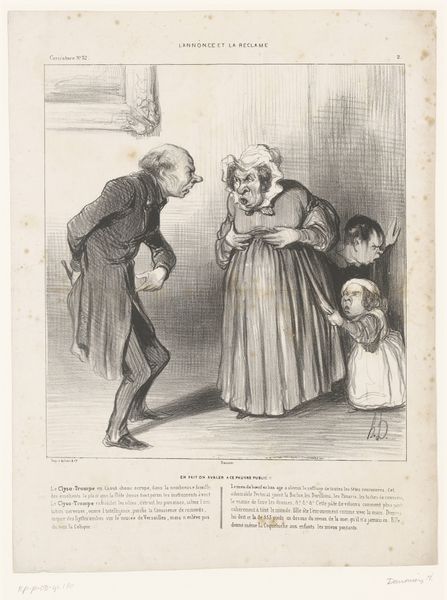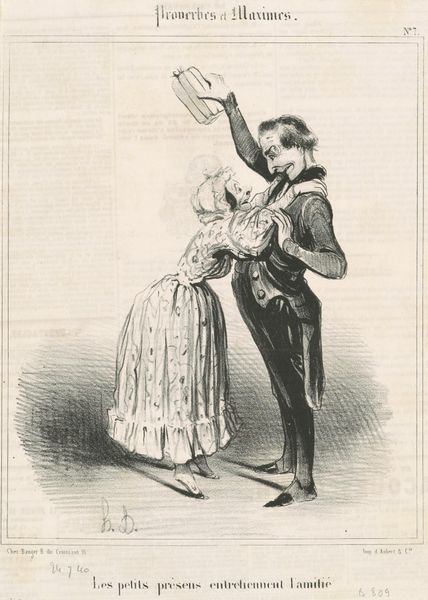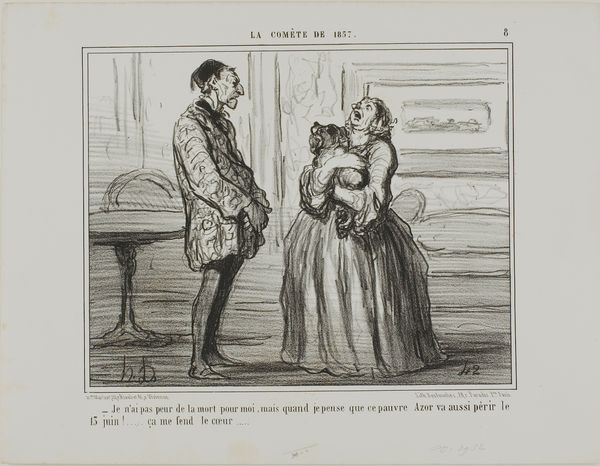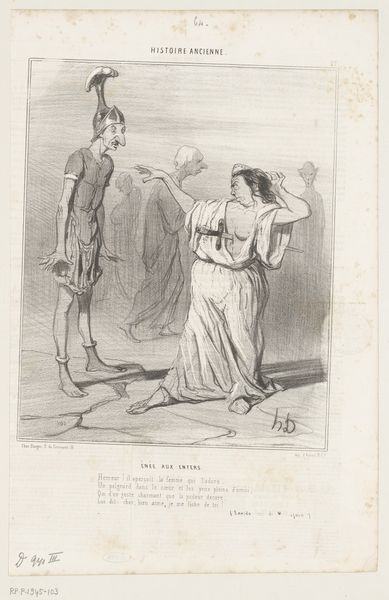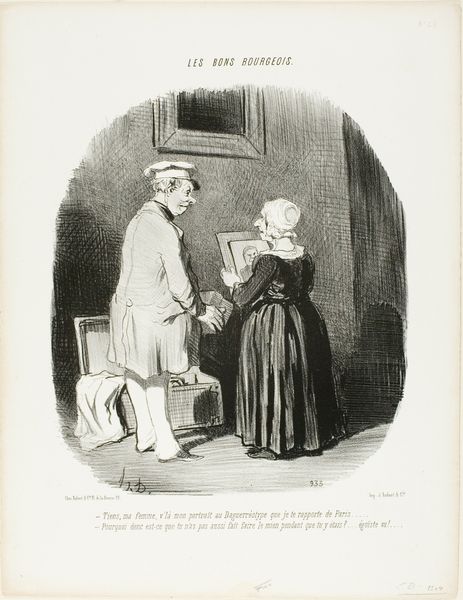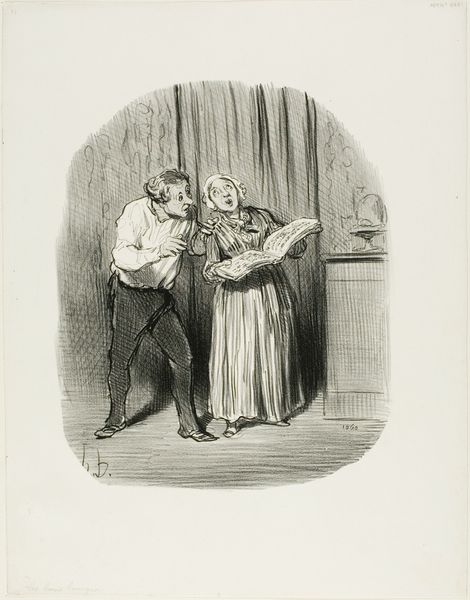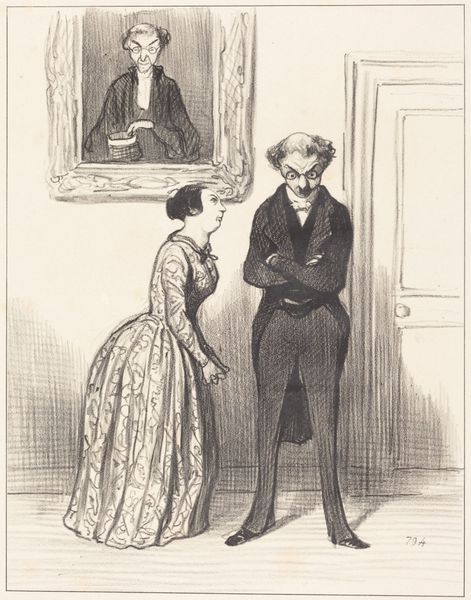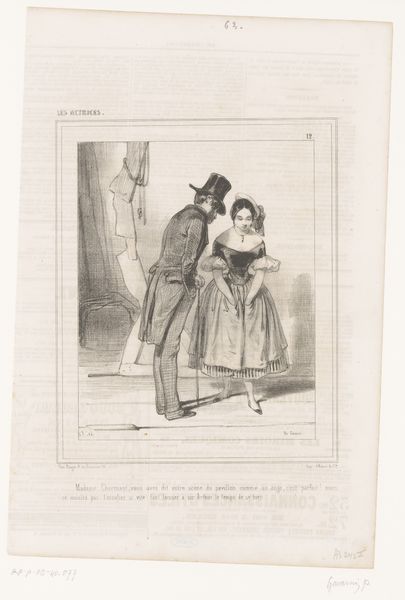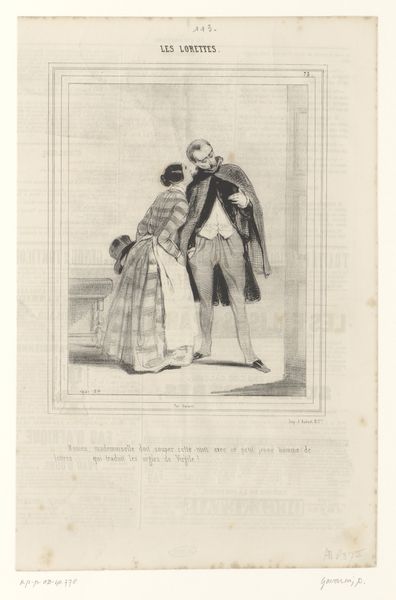
“- Husbands are really not what a vain people likes to believe!,” plate 3 from Les Divorceuses 1848
0:00
0:00
drawing, lithograph, print, paper
#
drawing
#
narrative-art
#
lithograph
# print
#
caricature
#
caricature
#
figuration
#
paper
#
romanticism
#
genre-painting
Dimensions: 249 × 192 mm (image); 357 × 274 mm (sheet)
Copyright: Public Domain
Editor: This is "– Husbands are really not what a vain people likes to believe!,” plate 3 from *Les Divorceuses*, a lithograph by Honoré Daumier, created in 1848. The scene seems incredibly tense; a woman gestures wildly at a stoic man. I'm curious about what’s behind this snapshot. How do you interpret this work, especially within its historical context? Curator: Well, Daumier was a master of social commentary, especially through printmaking. In 1848, France was in the midst of revolutionary fervor, with significant societal shifts happening. Divorce, while legalized, was still very stigmatized, particularly for women. This print, part of a series, tackles that societal tension head-on. Note the man's seemingly indifferent stance compared to the woman's exaggerated pose. What does that contrast suggest to you? Editor: It makes me think about power dynamics and maybe the performance of anger versus a more entrenched, silent control? The woman is theatrical, almost desperate, while he appears almost amused, or resigned. Curator: Precisely. And that gets to the heart of Daumier’s critique. Consider the rising bourgeoisie at the time, very concerned with appearances and social standing. This image isn't just about marital discord, but about the public performance of marriage itself. How does Daumier’s choice of lithography as a medium play into its social role? Editor: Because it allowed for wider distribution, reaching a broader audience with his satirical views? A more democratic and impactful art form for his time? Curator: Exactly. Daumier used accessible imagery to challenge the status quo and highlight the hypocrisy and inequalities prevalent in 19th-century French society. It forces us to think about how art becomes part of the public conversation. Editor: I never really thought about how the medium itself contributes to the political power of the piece. It definitely reframes how I see his intentions here. Curator: Understanding the relationship between art, social forces, and the institutions that shape them gives us a deeper insight. Hopefully, this exploration has added a dimension of meaning for you. Editor: It has definitely broadened my perspective on how social context informs artistic expression. I'll definitely be approaching art with a new lens moving forward.
Comments
No comments
Be the first to comment and join the conversation on the ultimate creative platform.


